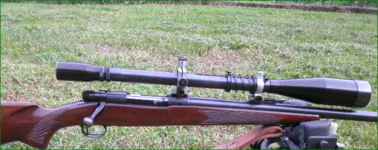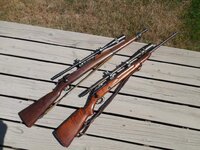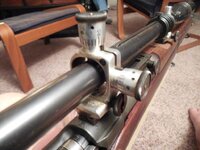- Messages
- 3,873
- Reactions
- 4,354
Reading Henderson's book "Marine Sniper" about Carlos Hathcock and am a little confused about how the Unertl scope he used worked. It talks about how he "pulls the scope back into position" or something like that. So I tried looking it up and I get a pic like this.
I guess it rides in the mounts and has a recoil spring. Still don't understand it and can't find a vid of it. Seems like it wouldn't hold zero.

I guess it rides in the mounts and has a recoil spring. Still don't understand it and can't find a vid of it. Seems like it wouldn't hold zero.


















